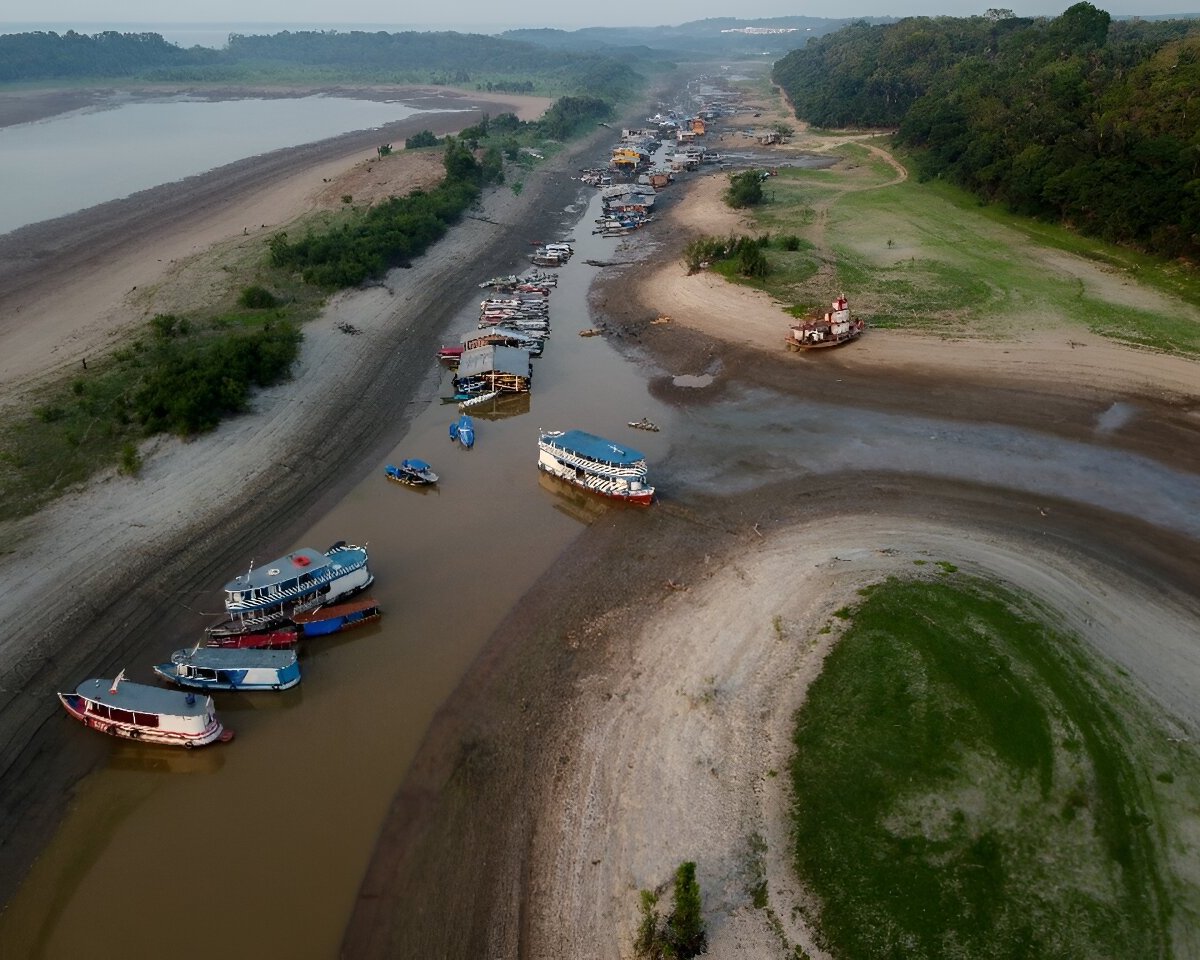We knew that increasing fossil fuel pollution, which continues to overheat the planet, would sooner or later disrupt the water cycle. It happened sooner than we thought. Recently, two seemingly opposing ecosystems, the Amazon and the Sahara, have experienced an unprecedented climate pattern reversal that defies climatic projection models.
Our Amazon, called the lungs of the world, is left without water: It is experiencing a drought unprecedented in history. The hottest and driest desert on the planet surprises everyone with devastating floods. These climate anomalies highlight extreme changes in climate and threaten the planet’s diverse ecosystems in an unpredictable manner.
In the Brazilian rainforest, prolonged drought has left rivers at their lowest levels in history, resulting in massive fish kills and severe impacts on riverside communities. Meanwhile, it is raining heavily in the Sahara, which is known for its usual drought. Caused deadly floods in cities and towns in Morocco.
Climate change causes extreme drought in the Amazon
In 2023, the Amazon experienced both a historic drought and the highest temperatures in its history. A study published in January 2024 by scientists from the World Weather Attribution (WWA) group “revealed that climate change caused by planet-warming carbon pollution is the main culprit,” says the report published on the organization’s website.
To test the role that climate change may have played in the Amazon drought, the authors studied existing meteorological data and computer simulations. The study compared two scenarios: the current climate, which has warmed by 1.2 °C since pre-industrial times, and the situation before global warming.
The result of the research is that global warming rain shortages are 10 times more likely and agricultural droughts are about 30 times more likely. Although drought currently occurs every 50 years, the possibility of a 2°C increase in climate above pre-industrial levels would lead to a devastating combination of these two phenomena every 13 years.
This could push the Amazon into a climate “tipping point”: a rapid transition from tropical forests to savannahs with little capacity to store carbon.
Extreme climate conditions may have caused floods in the Sahara Desert
Satellites recently captured an unusual color in images of the southern Sahara Desert: green. First detected in the south of the iconic desert that crosses many countries in North Africa, the hue expresses the development of plant life that reached that area after the emergence of storms. Scientists point to global warming as the possible cause of this event.
The West African monsoon (seasonal winds) that traditionally bring rain north of the equator between July and September has shifted abnormally north this year, causing unprecedented storms in the Sahara, according to the US National Oceanic and Atmospheric Administration (NOAA). Countries in the region Humidity levels six times higher than normal have been recorded.
A study published in June in the journal Nature concluded that displacements further north of the Intertropical Convergence Zone may become more frequent as carbon dioxide concentrations rise as a result of emissions from burning fossil fuels that warm the planet.
Although rain is normally considered good news, these storms caused devastating floods in Chad, Nigeria and Sudan, said Karsten Haustein of the University of Leipzig. Climate researcher for CNN. The result could be wetter monsoons and more severe flooding.
Follow the latest studies on the impacts of the climate crisis in Brazil and around the world at TecMundo. Take the opportunity to share the article with your friends and family on your social networks. Until later!
Source: Tec Mundo
I’m Blaine Morgan, an experienced journalist and writer with over 8 years of experience in the tech industry. My expertise lies in writing about technology news and trends, covering everything from cutting-edge gadgets to emerging software developments. I’ve written for several leading publications including Gadget Onus where I am an author.












